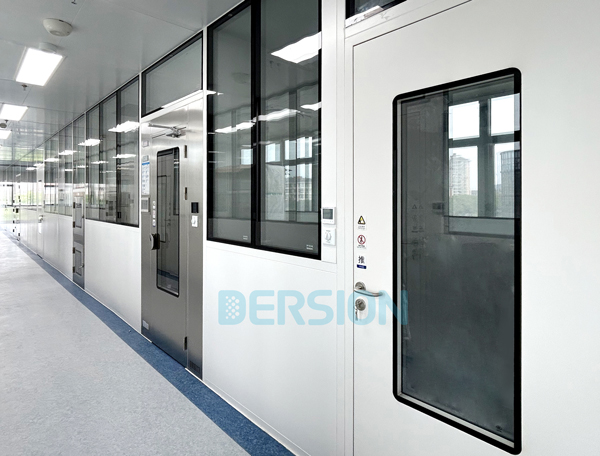Pharmacy clean rooms are controlled environments designed to maintain sterility and prevent contamination during the preparation of pharmaceutical products. Whether it’s sterile compounding or hazardous drug handling, pharmacy clean rooms play a vital role in protecting both patients and healthcare staff.
In this blog, we’ll walk you through everything you need to know about pharmacy clean rooms: regulations, classifications, layout, materials, and best practices.
1. Why Pharmacy Clean Rooms Are Essential
Pharmacy clean rooms ensure:
-
Sterile preparation of intravenous (IV) medications, chemotherapy drugs, and compounded pharmaceuticals.
-
Protection of patient health by eliminating microbial contamination.
-
Compliance with national and international standards like USP <797> and USP <800>.
These clean environments are critical in hospitals, outpatient clinics, compounding pharmacies, and specialty drug facilities.
2. Key Regulations: USP <797> and USP <800>
-
USP <797> governs sterile compounding, requiring ISO-classified cleanroom spaces, proper airflow, and personnel training.
-
USP <800> addresses hazardous drug handling, focusing on containment, worker safety, and environmental control.
Facilities compounding both sterile and hazardous drugs must comply with both regulations. This typically means separating the negative-pressure hazardous compounding room from the positive-pressure sterile area.
3. Clean Room Classification for Pharmacies
| Area | ISO Class | Application |
|---|---|---|
| Buffer Room (Sterile) | ISO 7 | Compounding area with laminar flow hoods |
| Ante Room (Sterile) | ISO 8 | Gowning, handwashing before entering buffer |
| Containment Room (Hazard) | ISO 7 | Negative pressure for hazardous drugs |
| Ante Room (Hazard) | ISO 7/8 | Transition area between non-sterile zones |
Cleanroom classification follows ISO 14644-1, based on particle counts per cubic meter.
4. Layout & Workflow Design
A pharmacy cleanroom typically includes:
-
Ante Room: For gowning and hygiene
-
Buffer Room: For compounding sterile preparations
-
Hazardous Drug Room: Negative pressure area with BSC or C-PEC
-
Pass-Through Chambers: For transferring materials to reduce contamination
-
Airlocks & Seals: To maintain pressure differentials
Designing with unidirectional flow, segregated zones, and easy-clean surfaces minimizes contamination risk.
5. Clean Room Construction Materials
Materials must be:
-
Non-porous
-
Chemical-resistant
-
Easy to clean and disinfect
Common choices include:
-
Walls & Ceilings: Powder-coated steel, HPL, PVC panels
-
Floors: Seamless vinyl or epoxy resin
-
Doors: Hermetically sealed cleanroom doors with interlock systems
-
Air Filtration: HEPA filters providing ISO-class air changes
Lighting should be sealed and flush-mounted, and HVAC systems must be customized to maintain humidity, temperature, and airflow rates.
6. Equipment for Pharmacy Clean Rooms
-
Laminar Flow Workbenches (LAFW)
-
Compounding Aseptic Isolators (CAIs)
-
Biological Safety Cabinets (BSC)
-
Compounding Aseptic Containment Isolators (CACIs)
-
Refrigerators with temperature logging
-
Gowning stations and cleanroom-grade PPE
All equipment should be regularly calibrated and validated.
7. Personnel & Procedures
Cleanroom success depends on trained personnel who follow strict protocols:
-
Proper gowning and hand hygiene
-
Regular environmental monitoring
-
Scheduled cleaning and disinfection
-
Strict documentation and batch records
A strong quality assurance (QA) system ensures ongoing compliance.
8. How We Help: Turnkey Pharmacy Clean Room Solutions
At [Your Company Name], we specialize in custom pharmacy cleanroom solutions for hospitals, pharmacies, and healthcare facilities. Our services include:
-
Regulation-compliant design (USP <797> / <800>)
-
Material selection and modular cleanroom construction
-
HVAC system design with ISO classification
-
Validation, testing, and staff training
Whether you need a sterile compounding area, a hazardous drug room, or a complete cleanroom facility, we deliver high-quality, cost-effective solutions that meet your timeline and compliance requirements.
Conclusion
Pharmacy clean rooms are an essential part of safe pharmaceutical preparation. With the right design, materials, and protocols, you can ensure regulatory compliance and patient safety. If you’re planning a cleanroom project for your pharmacy or healthcare facility, our team is ready to help from concept to completion.
Post time: Jul-15-2025

